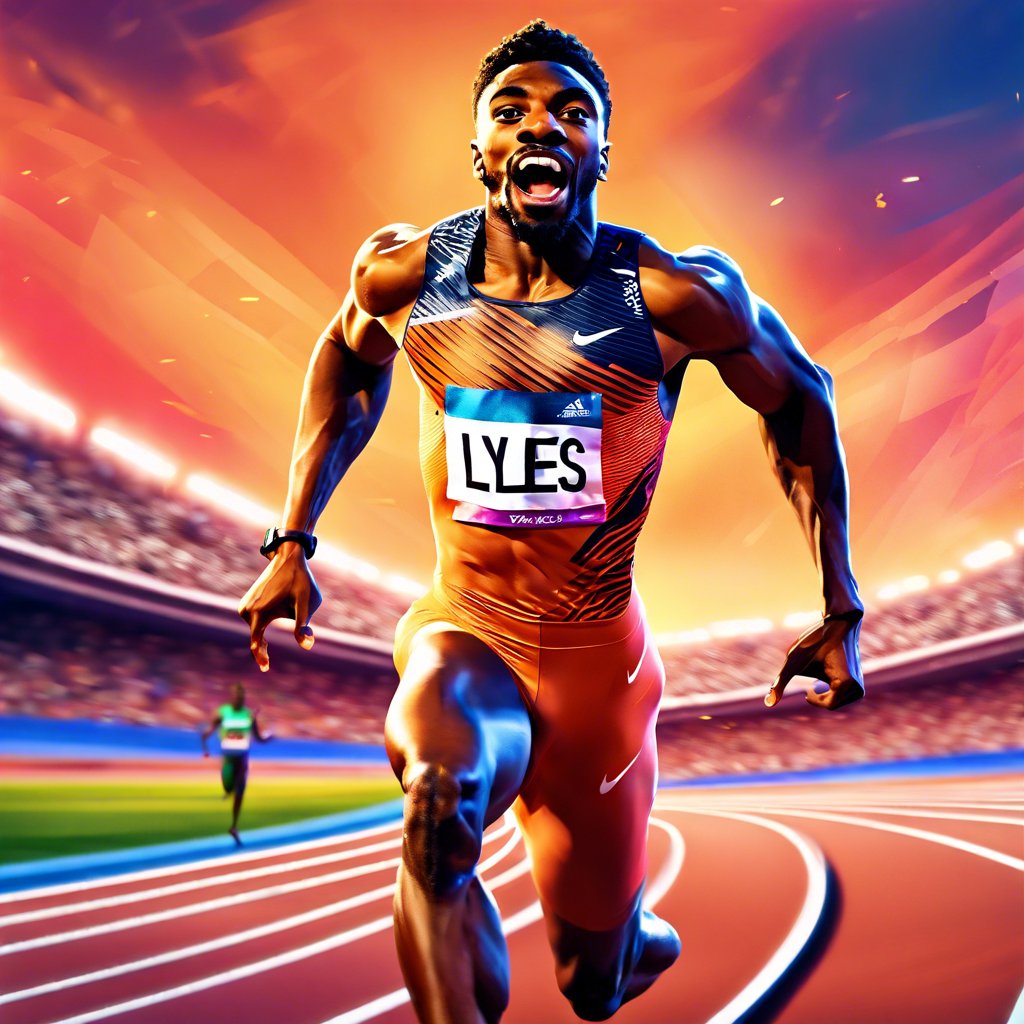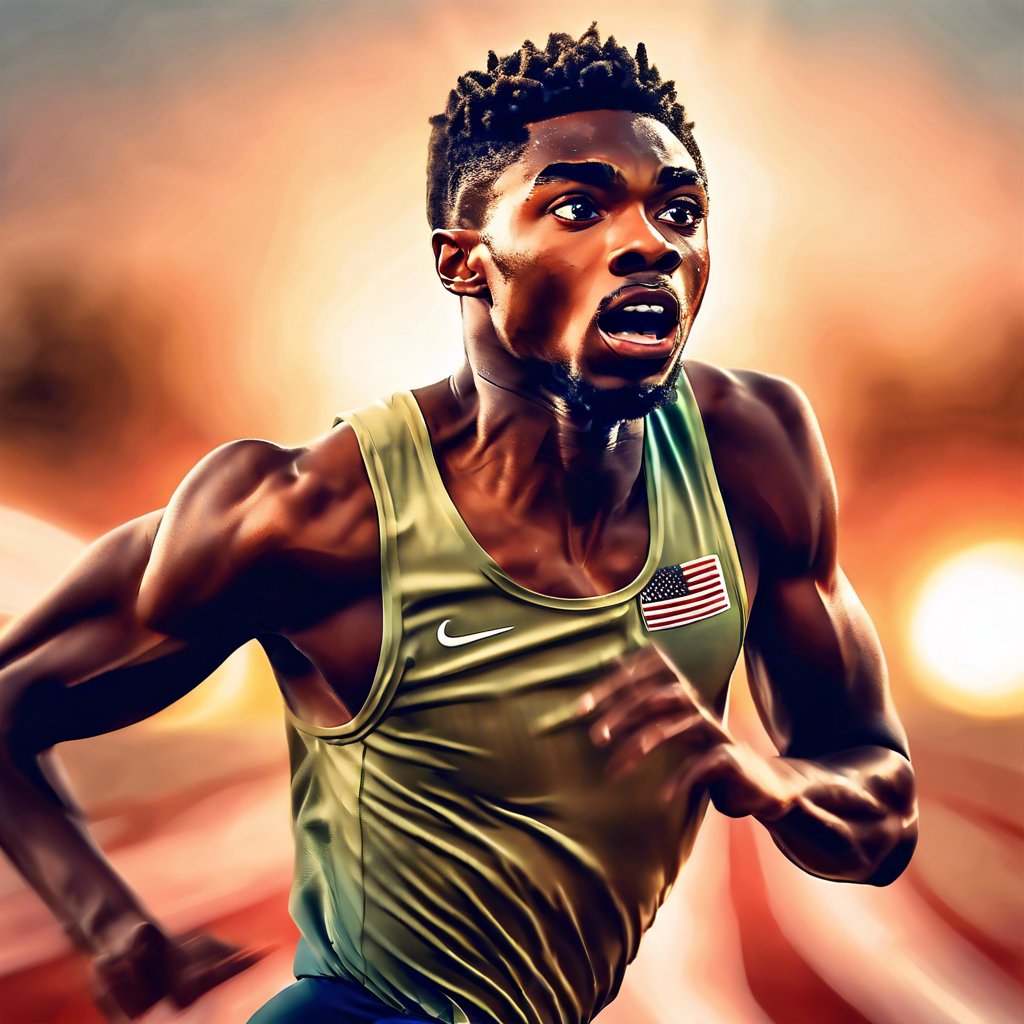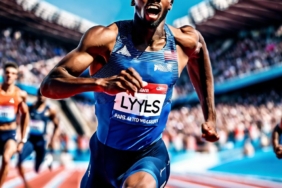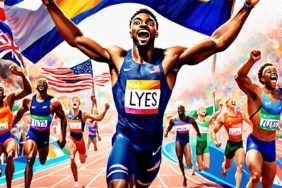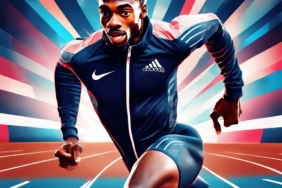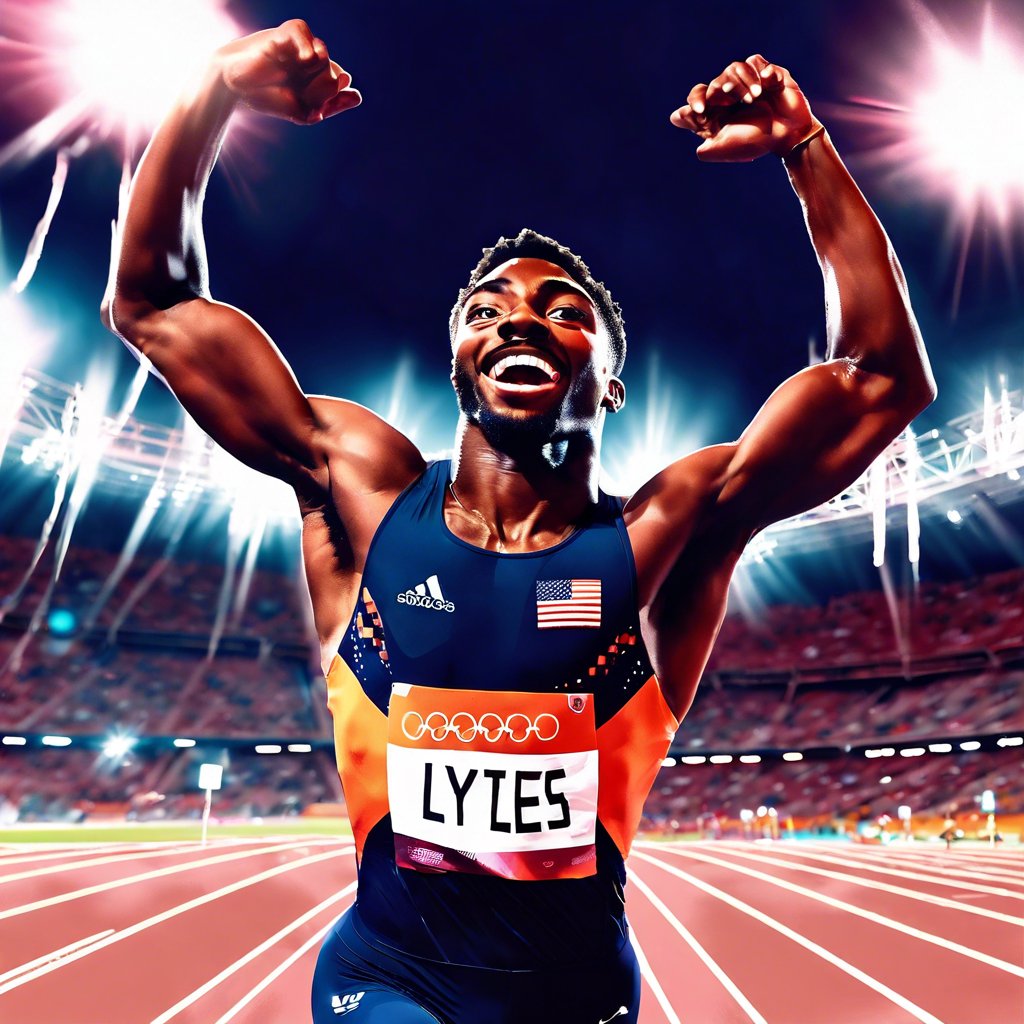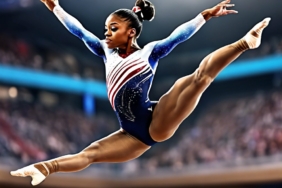The Journey of Noah Lyles: From Start to Olympic Glory
Sixty meters into the men’s 100-meter Olympic final in Paris, Noah Lyles finds himself in third place. He’s trailing by a mere three-hundredths of a second behind his American compatriot Fred Kerley and Jamaica’s Kishane Thompson. Yet, remarkably, this is precisely where he needs to be.
Lyles possesses unparalleled top-end speed, reminiscent of the legendary Usain Bolt. As he opens up his stride—an astonishing 2.5 meters—he begins to overtake his competitors, gliding past them with ease as they struggle to maintain their pace and decelerate. The climax of the race sees Lyles winning by just five-thousandths of a second, marking it as the closest men’s 100m Olympic final in history and one of the toughest to qualify for. With a time of 9.78 seconds, Lyles recorded the fastest finish in an Olympic 100m final since Bolt’s Olympic record of 9.63 seconds in London back in 2012.
During the final 40 meters, Lyles has the ability to close the gap on anyone. He demonstrated this skill in 2023 to clinch the World Championships and again during the trials leading to Paris. However, the final hurdle for him to conquer in his quest to become an Olympic champion was mastering the start of the race. Here’s how a 75-year-old coach and a digital stickman played a crucial role in giving Lyles the edge he needed.
“Your reaction times need improvement,” remarks Ralph Mann, a seasoned coach and former Olympian who won silver in the 400m hurdles at the 1972 Munich Olympics. Now at 75, Mann holds a PhD in biomechanics and is dedicated to enhancing Lyles’ block starts at his training base in Clermont, Florida. Set up on the side of the track is a marquee equipped with a series of cameras, alongside a laptop running sophisticated software designed to extract every last percentage of performance from Lyles’ starts.
Over the past four decades, Mann has meticulously analyzed data from over 500 elite athletes. “We understand what it takes to be an exceptional starter,” he explains. With an extensive 300-page textbook on the mechanics of sprinting and hurdling to his name, Mann’s expertise is unparalleled.
Using his wealth of knowledge, Mann developed software in 1999 that creates a stickman overlay on video footage of sprinters in the blocks. This tool, adjusted for Lyles’ body size and weight, visually illustrates where his limbs should be positioned during the set and launch phases. If you’ve ever raced against a ghost in a video game, you can envision how this method works, applied to the realm of sprinting.
They can analyze Lyles’ movements frame by frame, allowing for real-time feedback during training sessions. Mann identified several areas for improvement: Lyles’ hips were positioned too far back at the start, and his foot turnover was lacking in the initial strides. Compared to the model, Lyles appeared too spread out during the drive phase, with his feet coming up too high between steps and spending too long on the ground. Additionally, his ankles lacked the necessary rigidity.
In essence, there was significant room for enhancement.
Mann emphasized that to increase his speed, Lyles must minimize the time between steps while keeping contact time brief. They used white tape laid horizontally across the track to visually mark where Lyles should aim to land during specific steps (the third and seventh). Lyles understood the importance of the model and asked Mann, “What have you set it to?” Mann replied, “What we need to make you famous.” Lyles is committed to adjusting his form based on the model rather than solely relying on what feels good.
Despite his loud and occasionally arrogant demeanor, Lyles displays a sense of vulnerability with Mann. “Let’s see your precious model beat me,” he challenges, urging Mann to set the model to a standard beyond his personal best. “Let it run away, let me get embarrassed,” Lyles insists. At one point, Mann physically adjusts Lyles’ hips in the blocks, prompting Lyles to quip that he feels like he isn’t even in the starting position.
Progress began to show in February. After losing to Christian Coleman six times, Lyles finally triumphed over him in the 60m indoors, edging him out by a hundredth of a second to win the U.S. indoor title with a time of 6.43 seconds. Coleman, the world record holder at 6.34 seconds, had a better start, reaching his second step first, but Lyles, in sixth place at the halfway mark (30m), surged forward to claim victory at the line—a pattern that would continue.
For an athlete who struggled to break 6.5 seconds earlier in 2023, this victory represented a significant breakthrough. Although Coleman triumphed over Lyles at the World Indoors in Glasgow in March, Lyles recorded respectable times of 6.47 seconds in the semi-final and 6.44 seconds in the final.
Fast forward to Paris, and Mann’s assessment rings true: Lyles’ reaction times are indeed lacking by Olympic standards. He recorded the slowest reaction time in the final at 178 milliseconds, ranking 26th of 27 in the semi-finals (167ms) and 46th out of 70 in the heats with a time of 161ms. This aspect poses one of the biggest challenges to train for; no one wants to false start in the Olympics, especially in front of an 80,000-strong crowd at the Stade de France.
Though Lyles’ slower reaction time didn’t ultimately determine the outcome of the race, it certainly didn’t assist him. In lane seven, due to finishing third in his semi-final, Lyles took his second and third steps faster than Thompson in lane three, showcasing remarkable foot turnover despite being the last to launch off the blocks.
His form and mechanics were impressive, even if he didn’t accelerate as quickly through the drive phase as Thompson or Marcell Jacobs, the Tokyo 2020 100m champion. By the 40m mark, Lyles had jumped four places, having surpassed Jacobs (lane nine), Akani Simbine (lane five), Letsile Tebogo, and Oblique Seville, who were positioned outside and inside Lyles respectively. “I was fortunate to have Seville next to me because he’s been hitting that acceleration that I wasn’t achieving,” Lyles commented. “I wasn’t going to let him get away.”
However, as Mann wisely noted, “Noah’s biggest competition is Noah.” Lyles’ 60m split in the final was only one hundredth off his best indoor time. During the Paris Diamond League in June 2023, Lyles clocked 9.97 seconds, reaching 60m in 6.55 seconds. He saved one of his best starts for the Olympic final.
Thompson and Kerley both completed the 60m in 6.41 seconds, but both had already peaked and began to slow down. Lyles, on the other hand, reached his maximum speed a bit later than the other two and maintained his form longer, decelerating more slowly. Lyles’ longer stride ultimately made a difference; over the entire race, he took one step fewer (44) than Thompson (45). While Thompson may have a more imposing physique, strong arms can only propel an athlete so far—effective mechanics are irreplaceable.
Lyles finished the last 40m in 3.35 seconds, the fastest of all competitors; Thompson followed closely at 3.38 seconds. Five other runners, aside from Simbine in fourth, finished the last 40m in 3.4 seconds or slower. “I wasn’t patient enough with my speed—I should have let it guide me to the finish line,” Thompson reflected.
In his extensive book, Mann categorizes athletes based on various attributes—most talented, most professional, most driven, and best representatives of their sport. Yet, he places Lyles among his favorites. After securing gold in the 100m in Paris and setting his sights on a potential double with the 200m, Lyles should certainly consider adding Mann to his list of favorites too.
“Before I left for Paris, Ralph Mann said this is how close first and second are going to be,” Lyles recounted, bringing his index finger and thumb together to illustrate an inch. “I can’t believe how right he was.”
(Top photo: Andy Cheung/Getty Images)
